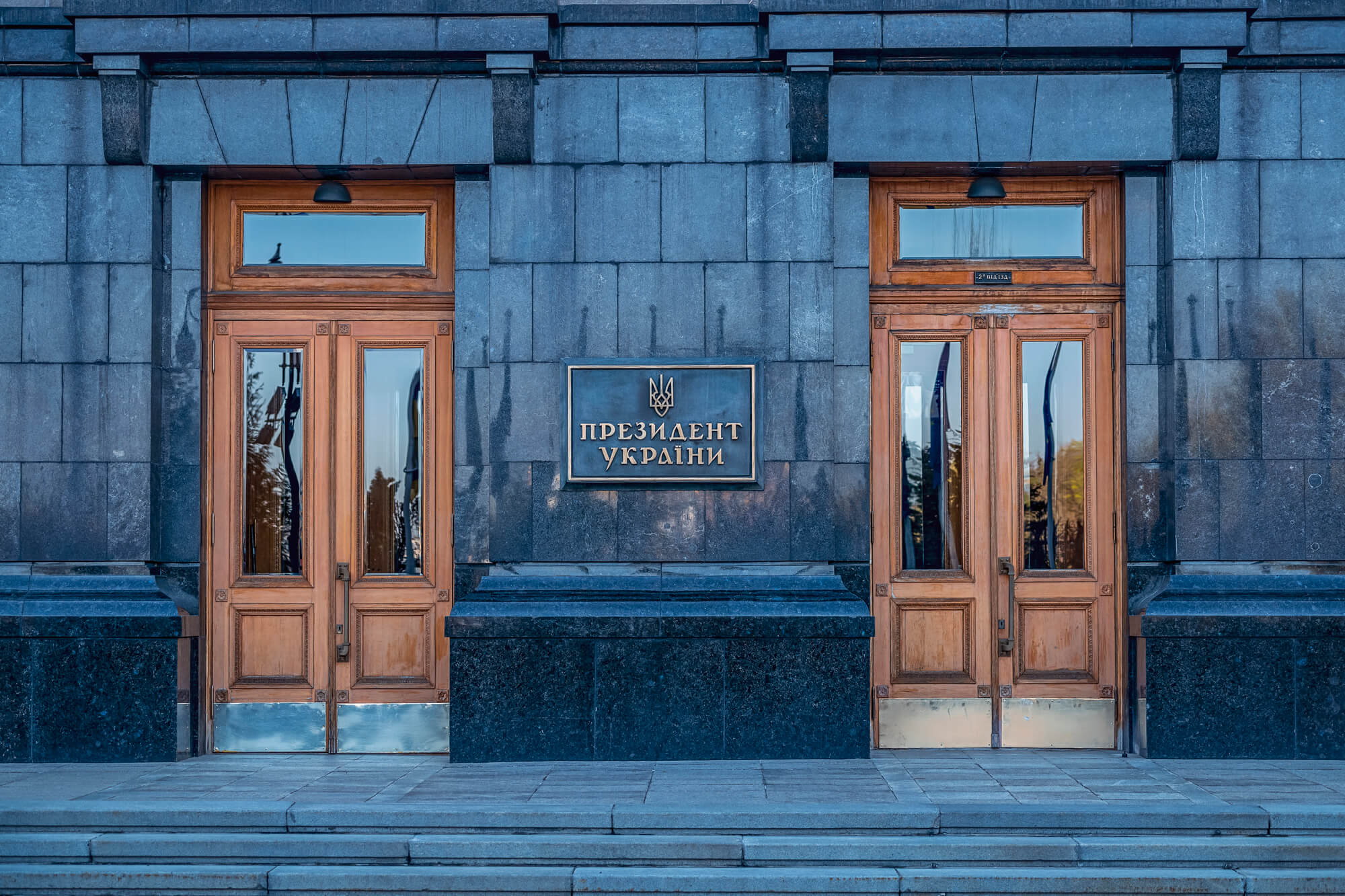The Ukrainian economy is one of the most energy-intensive in the world. It means that we use too much energy as per our GDP. Thus, according to the International Energy Association, in 2017, in order to generate $1 of GDP, Ukraine consumed an amount of energy equal to 0.27 kg of oil equivalent. The world average is 0.12 kg of oil equivalent. Therefore, Ukraine has a huge potential for energy conservation and energy efficiency.
Reducing energy consumption is important not only to preserve the environment or because we have the potential to reduce it. It is needed to make Ukrainian enterprises competitive. And more energy-efficient buildings mean lower utility bills. After all, one consumes less – one pays less.
The national energy efficiency system should include energy production and supply, operation of industrial enterprises, transport, and the budget sphere. But perhaps the most important of the components is the housing sector. The introduction of energy efficiency means implementing several of related reforms – reform of energy markets, housing and construction, reform of subsidies and support for vulnerable consumers. Therefore, a systematic approach is needed to succeed.
The heat that goes nowhere
In recent years, the government has paid considerable attention to residential buildings’ energy efficiency, as Ukrainian housing has room to reduce energy consumption. 85% of Ukraine’s housing stock was built before independence. Due to the significant age, worn-out state of structures and engineering systems, such houses consume 40-70% more energy than new buildings.
In 2016, the government estimated that Ukrainian housing consumes 2-3 times more energy than the EU member states. The average specific energy consumption in apartment buildings in our country was 264 kWh per square meter, while in European countries, this figure did not exceed an average of 90 kWh per square meter. This figure varies from country to country – not only because of the condition of residential buildings but also because of climatic conditions. Obviously, the colder the country, the higher the consumption.
According to the latest estimates, the average specific energy consumption of residential buildings in Ukraine was 186 kWh per square meter.
Promoting the reform
To increase energy efficiency in the housing sector, the Verkhovna Rada adopted several necessary laws back in 2017 – on property rights in an apartment building, Energy Efficiency Fund, energy efficiency of buildings, housing and communal services and сommercial accounting of thermal energy and water supply.
However, the implementation of these laws has been delayed. Maladjusted legislation, uncoordinated work and changes in government led to the late approval of necessary bylaws. Therefore, organizational changes and financial mechanisms stalled. The promotion of energy efficiency was also insufficient. Thus, the 2019 survey showed that more than 70% of the population had not heard of any state or local energy efficiency support programs.
However, there were successes too. Thus, from July 1, 2019, certification of energy efficiency of buildings with the determination of the class of the building according to the European method became mandatory. Several energy consumption indicators for heating, air conditioning, hot water supply, and lighting are assessed during the certification.. The higher the class of the building is, the less energy it consumes.
Certification is carried out based on the energy audit. It does not cover individual houses, historical and religious buildings and some industrial and agricultural buildings.
In Ukraine, the energy efficiency class of a building is not yet significant for the consumer. Whereas in European countries, it determines the value of the real estate. The higher the energy efficiency class is, the more expensive the property is since there is a lower cost of its maintenance and operation. According to the Joint Research Center (JRC) of the European Commission, housing prices in the EU countries are growing by an average of 3-8% due to increased energy efficiency.
In practice, Ukraine has only just begun to classify such buildings. As of February 2021, 6,022 buildings were certified in Ukraine, including 2,920 residential buildings. The results of the audit are publicly available.
To conduct an energy audit, one needs not only laws and regulations but also qualified professionals who have passed certification. Thus, an additional bonus from energy efficiency reform is the creation of new jobs. Currently, energy auditors are professionally trained by 30 higher educational institutions of Ukraine and certified by 43 higher education institutions and other organizations in which the relevant certification commissions have been established.
In 2019, the Minregion estimated that the market in Ukraine needs 5-7 thousand energy auditors. Now they are a little less than 1.5 thousand. Most of them are in Kyiv, Lviv and Rivne regions. In addition to the analysis of energy consumption, an energy auditor also provides recommendations for improving energy efficiency.
The price paid
Until recently, Ukraine had two primary programs that financed investments in energy efficiency in the housing sector – the state program “Warm Loans” launched in 2014 and the donor program IQ Energy, which operated during 2016-2020 with the assistance of the EBRD. Both programs partially remunerated the loan principal taken to invest in energy efficiency projects, such as thermal modernization of buildings, the purchase of efficient heating equipment, equipment running on alternative fuels, etc.
IQ Energy worked only with private households – they could receive up to 20% compensation on the principal loan. During the program, more than 43,000 Ukrainian households took part in it, and the amount of funding reached UAH 1.5 billion.
“Warm loans” offered compensation of up to 40% of the cost of equipment and were provided to both private households for individual houses and condominiums/housing and communal services for apartment buildings. And the repayment of part of the loan amount to households receiving subsidies for housing and communal services could reach 70%.
In addition to national programs, there were local programs to reduce the cost of “warm loans”. Under them, part of the principal loan or interests was paid from the local budget.During the program, households saved an average of 30% of natural gas annually. Condominiums/housing and communal services reduced heat consumption by an average of 19.5%. The condominiums saved the most due to energy-efficient lighting – 22%, the least – 11% – due to the saved heat after the front door’s replacement.The demand for “warm loans” has been growing every year. The money allocated by the government for the program for the year was usually exhausted in 2-3 months. In mid-2018 and 2019, the government expanded funding for the program. However, only UAH 400 million was projected for 2020 against UAH 1.1 billion in 2019.
For almost 6 years, about 850,000 families have participated in the program. They have invested almost UAH 9 billion in energy efficiency measures and received about UAH 3.2 billion in grants from the state. Last year, the government decided to extend the program of “warm loans” for individual homes for 2021 – but planned for it only 150 million UAH, which is less than a third of the average level of funding in previous years. It is currently unknown whether this money will be enough to meet the loans already taken for the program. The funds are reimbursed to households after they have taken out a loan and provided confirmation of the thermal modernization work performed – that is, they confirm the intended use of the loan. Therefore, it is possible that the household may take a loan, but during the execution of the work, 150 million will be exhausted to compensate the other households that were faster.
In 2019, the Ukrainian government, with the EU and the German government’s support, launched the Energy Efficiency Fund to support condominiums.
The Fund has launched a program of comprehensive modernization of high-rise buildings “Energodim”. It entitles condominiums to receive up to 70% of the cost of external renovation of the house and modernization of internal systems. It, in turn, will reduce utility bills and CO2 emissions and increase the comfort and future value of the real estate. The Fund also provides expert advice and technical support to condominiums.
According to the Minregion, significant investments are needed to improve buildings’ energy efficiency, as about 144,000 houses in Ukraine – 80% of all apartment buildings – need modernization. As of March, almost 400 projects are being implemented under the “Energodim” program. This figure seems small, but these projects unite more than 30,000 families.
But thermo-modernization of all Ukrainian housing will take about a century, said Minister of Communities and Territories Development Oleksii Chernyshov in response to a request from VoxCheck.
“According to Ukraine’s commitments to implement European Directives, we must achieve at least 1% of thermo-modernized buildings per year, i.e. all buildings will take about 90-100 years, provided that we spend at least 500 million euros per year on thermal modernization,” told Chernyshov.
The government is currently working on a new state program on energy efficiency – for 2022-2026. They promise to make it wider – not only for the population but also for enterprises, budgetary institutions, bioenergy projects. So far, they want to provide UAH 10 billion for the implementation of the 5-year program.
They also plan to launch another project – “Energy efficiency of public buildings in Ukraine.” The agreement on its financing was concluded with the European Investment Bank on October 6, 2020. The total contribution of the EIB under the Agreement will be EUR 300 million. The money will go to about 1,000 public buildings in Ukraine, including preschools and secondary schools, health care facilities, as well as social, administrative and cultural facilities in state or communal ownership. The ministry expects the project to prevent 1.25 million tons of CO2 emissions and directly affect more than 2.5 million citizens from small and medium-sized cities, as well as amalgamated communities. It is planned to select cities for the program at the end of 2021.
Thus, investing in the energy efficiency of housing has several positive effects. First, energy savings – and hence the reduction in payments to households. Second, they allow the state budget to save on subsidies – because the less energy consumption is, the fewer households pay for utilities more than 15% of their income. Besides, investment in energy efficiency stimulates the economy, especially the construction industry, and creates jobs. After all, buildings’ energy modernization projects create additional demand for construction products, equipment and skilled workers. According to GIZ calculations, the number of jobs for specialists who will be employed in the thermal modernization of housing can reach 795 thousand if all buildings are modernized.
Attention
The authors do not work for, consult to, own shares in or receive funding from any company or organization that would benefit from this article, and have no relevant affiliations


